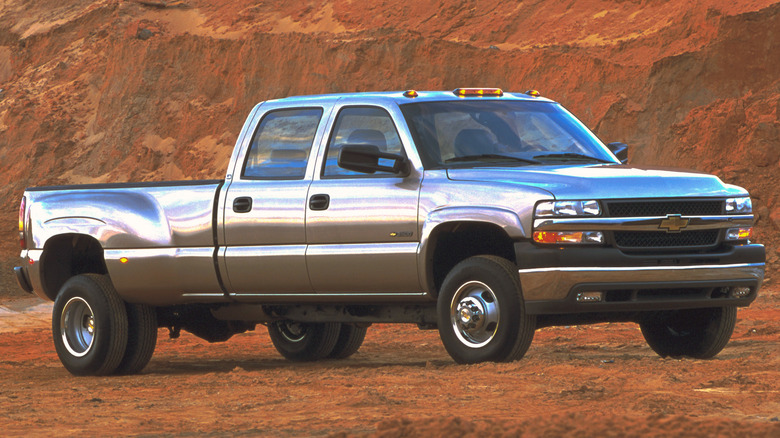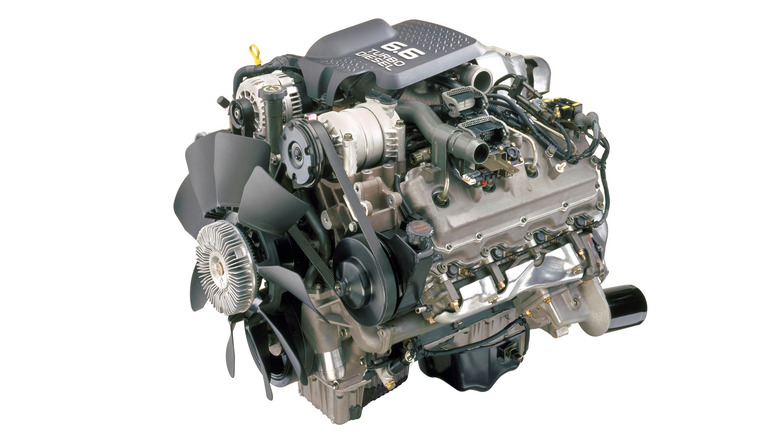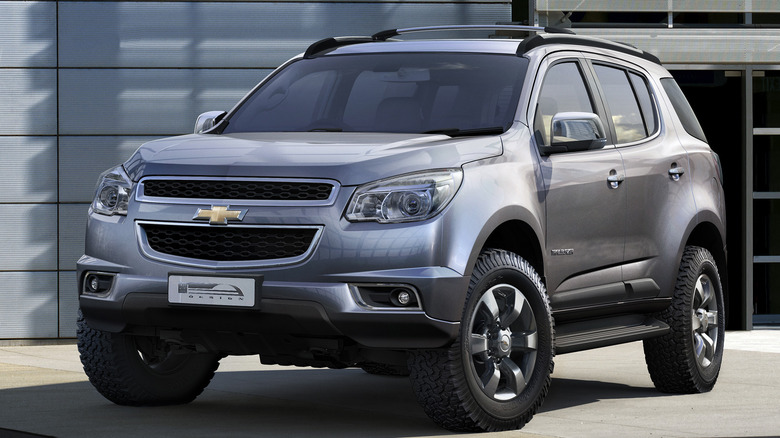The History Behind The Legendary Duramax Diesel
Ford has PowerStroke, Ram trucks have Cummins engines, and General Motors has Duramax diesel engines. All three vie for torque and diesel market supremacy — Duramax, however, doesn't always feature in the conversation.
It is, after all, the newest diesel engine to join the lineup of the Big Three. PowerStrokes came around in 1994, and Cummins' first purpose-built automotive diesel engine debuted all the way back in 1932, and has been affiliated with Ram trucks since 1987. Duramax has only been in business since 2001 after it was formed as a join-venture between General Motors and Isuzu.
However, just because Duramax is the youngest diesel automaker in Detroit doesn't mean it should be counted out. The company's first ever commercial offering — a 6.6-liter V8 — threw down 520 pound-feet of torque. A Dodge Ram 2500 with a 5.9-liter engine only produced 460 pound-feet of torque. Duramax knocked it out of the park with its first engine.
Steady changes
In the engine's more than two decades of history, Duramax engines have only ever come in three displacements in the United States: 6.6-liter for heavy duty trucks, a 2.8-liter, and more recently, a 3-liter for smaller trucks. That said, power should be more of a concern than variety. The engines may not have as storied a history as its competitors, as it was mostly made out of a necessity to replace the prior Detroit Diesel-branded engines that GM used.
As opposed to many different displacements and sweeping changes over the years, Duramax engines have gradually improved over time on the market. Nothing drastic, just incremental changes to make the engine better and produce lower emissions and more torque.
The current iteration of the Duramax produces 975 pound-feet of torque when paired with a 10-speed automatic transmission. General Motors may not have added much in the way of displacement in 22 years, but an extra 455 pound-feet of torque over the very first Duramax speaks for itself. From the 2016 model year to the 2023 model year, Chevy briefly offered a 2.8-liter Duramax on the Chevy Colorado — offering 181 horsepower and 369 pound-feet of torque.
The 3-liter Duramax is an inline-6 engine that debuted in 2019 for the 2020 model year, and generated 277 horsepower with 460 pound-feet of torque. The engine sets itself apart from the mainline Duramax in that it's also available on the Chevy Tahoe and Suburban, as well as the Silverado. In previous years, diesel engines were not available. Subsequently, it's also an option on the GMC Sierra, Yukon, and Yukon XL, as well as the Cadillac Escalade.
A Duramax for the world
For General Motors' overseas market, there are additional Duramax options. In 2011, the global version of the Chevy Colorado had two options of Duramax four-cylinder engines: a 2.5-liter that put out 258 pound-feet of torque, and a 2.8-liter that generated 346 pound-feet of torque.
While consumer-level trucks in global markets like the Asia-Pacific region typically don't reach the torque numbers seen on American trucks, 346 pound-feet is fairly generous. Additionally, the 2.8-liter Duramax was featured in the global market version of the Chevy Trailblazer, a marque that Americans may be familiar with. However, the Trailblazer for the rest of the world was a seven-seater SUV, while the current Trailblazer seen on American roads is a compact crossover.
The Duramax is not a particularly exciting engine, and you probably won't see half-a-dozen people at the hardware store wearing "DURAMAX" shirts like you would see with PowerStroke or Cummins. However, Duramax engines make power where it counts when you're pulling a trailer, or doing hauling work, which is infinitely more important than style points.
Whether you're pulling stumps out of the ground on a farm in Iowa, or pulling a trailer in Thailand, there's likely a Duramax for you.


